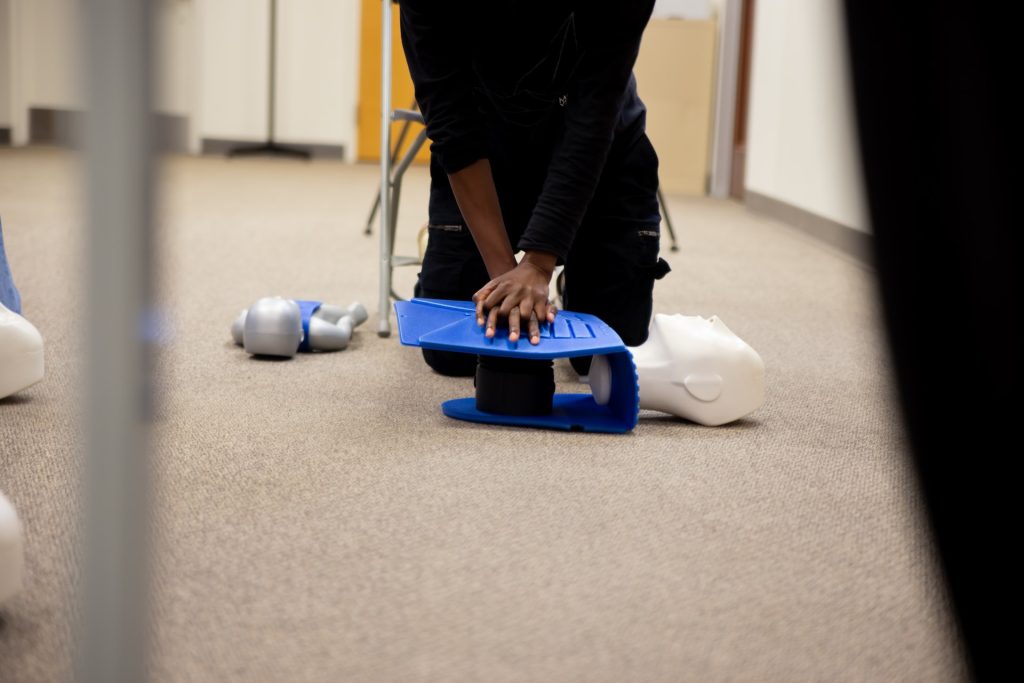How much do you know about CPR? Even if you have taken your CPR certification there may be quite a bit about the life-saving skill that you don’t know. For starters, do you know what CPR stands for? Was your answer cardiopulmonary resuscitation?
Keep on reading to test your knowledge with a few basic CPR facts.
6 CPR Facts You Should Know

1. More than 350,000 cardiac arrests occur outside of a hospital setting in the U.S. every year.
This means that there are more than 350,000 people who need lifesaving CPR from a family member or bystander in order to survive.
Source: CPR Facts & Statistics
2. Most cardiac arrests take place in the home.
Among cardiac arrests that occur outside of a hospital setting, the majority (70%) take place in a home or private residence. About 18% take place in a public setting, and 11% occur in nursing homes. With these statistics in mind, the life you save could be your parent’s, spouse’s, or child’s.
Read: Actor Says CPR, AED Saved His Life
3. CPR saves lives and improves outcomes.
If someone goes into cardiac arrest, their heart stops beating effectively, and they become unresponsive with no normal breathing. When this occurs, performing CPR helps keep blood flowing to the brain and other organs, reducing the risk of permanent brain damage or other disability. If performed immediately, CPR can double or triple a person’s chance of survival.
4. Bystander CPR is underused.
Unfortunately, less than half of people who experience sudden cardiac arrest receive help in the form of CPR or AED use before emergency professionals arrive. Additionally, studies show that women are even less likely to receive CPR than men are. Becoming CPR certified and staying up to date with training gives individuals the confidence and ability to step in and make a difference in a medical emergency until professionals arrive.
Read: The Out-of-Hospital Chain of Survival
5. The out of hospital survival rate is low.
Ultimately, only about 10 percent of people who suffer from cardiac arrest outside of a hospital setting survive. While still low, this is nearly double what it was back in 2000. Therefore, as more people become trained in CPR and AED use, we can expect the survival rate will likely continue to improve.
6. It’s easy to get CPR certified.
HeartCert offers CPR certification options for everyone. From traditional in-person training, to hybrid classes using unique kiosk technology to fully virtual CPR training courses, you’ll find a method that is ideal for your learning style and your schedule.
How HeartCert’s Self-Service Kiosk Makes CPR Certification Easy and Flexible
We also offer group classes intended for businesses, daycares, schools, assisted living homes, construction sites and more. Our CPR certification classes are AHA and American Red Cross certified and combine CPR, AED and first aid into one convenient class.
Now that you know a bit more about CPR, what’s stopping you from getting or renewing your certification?
You could save a life! Sign up for CPR training with HeartCert today.
This is an updated blog that was originally published in 2023.
HeartCert CPR is your trusted training partner for CPR, ACLS, PALS, EMR, First Aid, CNA, IV, EKG and more.
HeartCert CPR courses include CPR/AED/First Aid, Basic Life Support (BLS), Advanced Cardiac Life Support (ACLS), Pediatric Advanced Life Support (PALS), Certified Nursing Assistant training, IV training, EKG training, babysitter basics and more. Courses and certifications from both the American Heart Association and American Red Cross are available.
We are now offering virtual CPR courses and certifications. We offer safe in-person courses at all HeartCert locations throughout the United States, including our headquarters, HeartCert CPR Eagan.
Source: American Heart Association, “CPR Facts & Stats”

